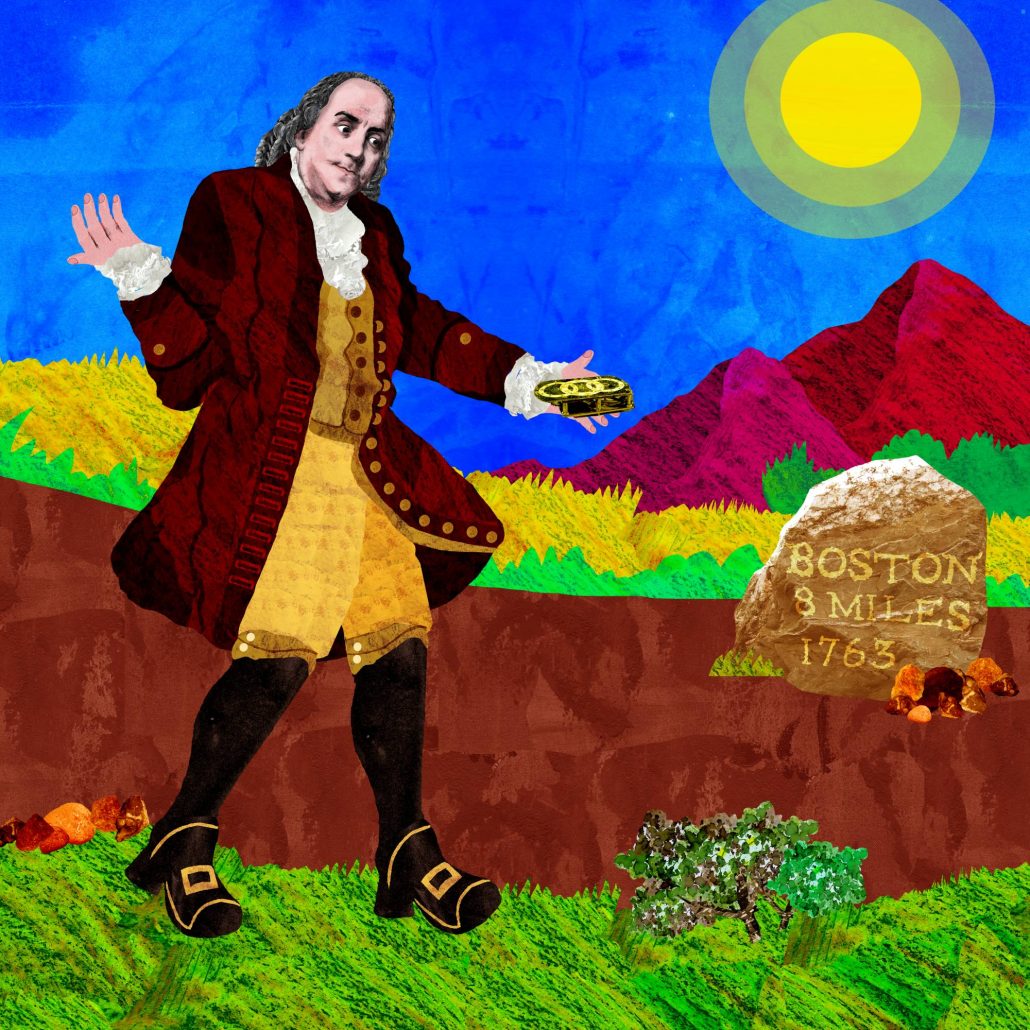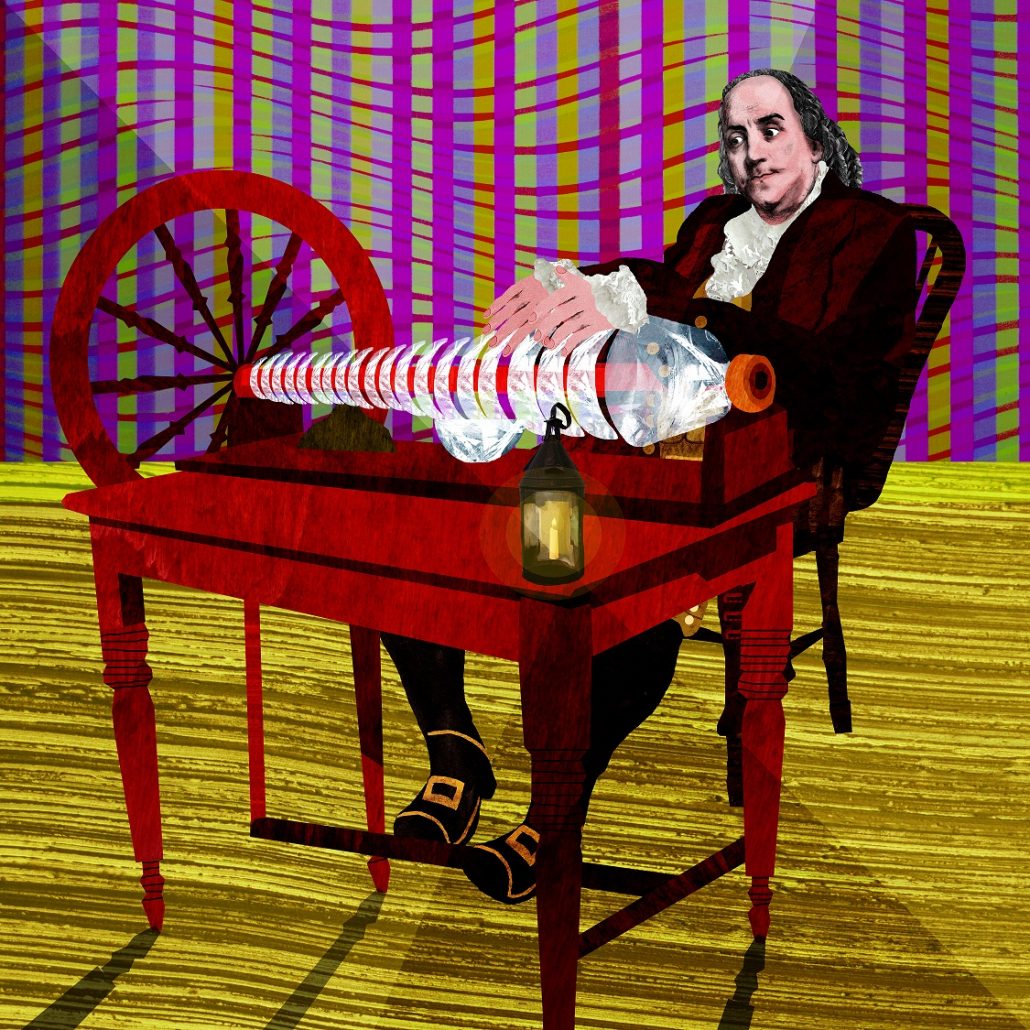Franklin in London
17 January, 1706: Franklin is born in Boston MA
1716: Franklin begins work at his father’s candle shop
1718: Franklin starts as apprentice printer working for his brother James
1723: Franklin runs away to Philadelphia to become a journeyman printer
1724: Franklin travels to London to continue training as a printer
1728: Franklin opens his own print shop in Philadelphia
1730: Franklin enters common law marriage with Deborah Read
1732: Franklin launches Poor Richard’s Almanac
1736: Franklin organises the first fire department in Philadelphia
1737: Franklin is appointed Philadelphia Postmaster; Clerk of Pennsylvania Assembly
1741: Franklin designs fuel efficient Franklin Stove
1743: Franklin founds the American Philosophical Society
1748: Franklin sells his printing office and retires from business
October 1748: Franklin is selected as councilman in Philadelphia
13 November 1749: Franklin is appointed president of Philadelphia Academy, which becomes the University of Pennsylvania
June 1749: Franklin becomes Justice of the Peace for Philadelphia
Late 1740s: Franklin purchases enslaved people, Peter and Jemima, followed later by Othello, King and George
13 August 1751: Academy and Charity School opens
1751: Franklin is elected to Pennsylvania Assembly
1752: Franklin invents the lightning rod and performs kite and key experiment
10 August 1753: Franklin becomes Postmaster for the American colonies
1757: Franklin arrives in London as agent for Pennsylvania Assembly, along with two enslaved men, Peter and King
1759: Franklin receives honorary doctorate from the University of St. Andrews, Scotland
1761: Franklin develops his glass armonica
1762: Franklin leaves London for Philadelphia
1764: Franklin returns to London to represent colonial interests before the Crown
1765: Franklin opposes the Stamp Act leading to its repeal in 1766
1766: Franklin writes treatise Prospects of War in America
1768: Franklin experiments with canal depths and devises a new alphabet
1769: Elected President of the American Philosophical Society
1770: Writes spoof Craven St. Gazette on life at house
1771: Begins Autobiography
1772: Sends Hutchinson Letters
1773: Hutchinson Letters are made public
1774: Admits to releasing Hutchinson Letters and is subject to House of Commons trial
1775: Departs 36 Craven Street. Elected to Second Continental Congress. Proposes Articles of Confederation
1776: Signs Declaration of Independence and Sails to France as American Commissioner
1777: Settles in Passy, France- Feted throughout Paris.
1778: Negotiates and Signs Treaty of Alliance with France
1780: Further develops bifocals
1782: Negotiates treaty of Paris with Britain
1783: While in Paris watches the first hot air Balloon flight.
1785: Returns to Philadelphia
1786: Invents the Long arm, an instrument for taking books down from high shelves
1787: Elected President of the Pennsylvania Society for Promoting the Abolition of Slavery-Also signs the constitution.
1789: Writes last public letter urging the abolition of slavery
1790: Dies on the 17th of April in Philadelphia aged 84








